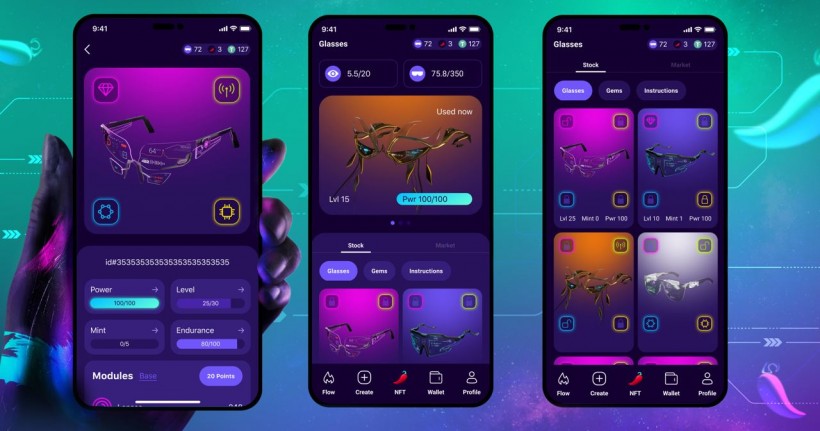
Apart from a little spark of joy from GameFi projects like Axie Infinity, this season the blockchain industry achieved little to accelerate mass adoption. But what if all along there was no need to invent something new but only to rethink what we do every day?
Let's explore what led to the crypto industry feeling stuck, how GameFi helped the paradigm shift and how blockchain-based social media projects can pick up the slack and run toward each and every user.
From pandemic shock and crypto freezing to FTX assets frozen
Experts all around the globe agree on one thing: there is far from enough heat in the industry to break the crypto winter's ice. After reaching its all-time high of over $68K in November 2021, Bitcoin as the main indicator of the industry's health has been rolling down the slope. In November 2022, the price was hardly a quarter of the record price.
The collapse of one of the world's largest exchanges FTX only accelerated the pessimistic trends amidst the after-pandemic shock and global crisis. The mix of poor liquidity and rising energy costs does not make it any easier.
What does it mean for regular users? Although the crypto adoption curve still looks sharp and Сrypto.com reports an adoption rate reaching almost 4% year-to-date, there might be a strong need for real-life use cases to discern the signs of spring.
The GameFi spark of joy
The first case when regular users got involved was in the gaming industry. The crypto field became interesting not only to tech geeks and profit seekers but also to regular villagers who could make a living out of it thanks to a successful marriage of DeFi and gaming industries. There are few people who have never heard of the popular media story about Axie Infinity lifting the Philippines out of poverty.
In a matter of months, the main paradigm of the gaming industry has shifted. Before gamers paid for entering the game or enjoying the gaming experience. Apart from cyber sports moguls, few earned anything on it. Thanks to crypto innovation, Pay-to-Play was replaced by the Play-to-Earn model. Hence the boom of the GameFi industry.
This might be great news for gamers, but what about the rest of the population? Getting an extra couple of hundred might sound interesting enough but for many not enough to radically change the behavior traits and lead to mass adoption. After all, one can hardly picture the mass adoption of endless gaming tasks. At least not in this decade.
A new mindset: get endorphins and money in one place
To succeed in accelerating mass adoption, blockchain-based projects must fit into everyday activities. While fintech is solving the way we can pay for coffee with crypto, the rest is still on its way.
Apart from grocery shopping and coffee or tea sipping, 7 billion smartphone users around the globe have another thing in common - they all scroll down their social media feeds. On average, a modern user spends over 2 hours daily on Social media, while in some countries like the Philippines - almost 4 hours daily.
A big portion of this time goes to watching advertisements that big corporations are paying to tech giants with little concern for data safety and user privacy rights. Can users get their share of the pie as well?
From an economic point of view, definitely yes. The Nobel Prize Laureate Herbert A. Simon, who coined the term "attention economy" in the 1970s, believes that the attention, or time spent on viewing their feed, is a scarce commodity with a value of its own. A commodity is something that can be sold for money. Following this logic, bloggers who create content as well as their viewers should get remunerated.
One could say that the biggest social media platforms that reported over $150 billion in profits have little incentive to do anything on this front. But in the same way, blockchain-based browsers might one day challenge the hegemony of Google, Meta-Twitter-TikTok reign might come to an end just as telecom operators lost profits on cost-per-sign SMS and gave space for modern free messengers like Telegram.
The first sprouts of a snowdrop

The first to plant the snowdrop was the NUTSon app team of over 150 developers. After the success of their previous endeavor with over 1.5 million and 3 years of coding, they have created a platform named Cheelee which is like TikTok but users can get paid for scrolling their feed. Now, if you want to earn extra income, there is no need to buy Axie and win virtual battles. One needs to opt for endorphin-inducing scrolls just like one does for free.
Unlike centralized social media, in the decentralized world, there is no evil corporation that puts your data in Pandora's box to spill it over during yet another data leakage incident like the one of Meta that affected over 500 million users all over the globe. In contrast with the GameFi industry, on Cheelee one needs zero investment to join. Just like posting on Instagram, or calls on Telegram, the Starting NFT glasses cost nothing.
The beauty of it is that this time the share is not cut from creators or bloggers as it was done for example in centralized music streaming platforms where musicians got next to nothing revenue. Now the whole pie just becomes bigger.
In the same way, transcontinental payments can be free and the financial system not ruined, the social media arena can offer much more to its users than it is offering now. The invention of non-fungible tokens (NFTs), the change of mindset, and a sustainable ecosystem on the edge of Web3 and TradFi led this company to be the first to break the ice.
Social media transformation might take a little bit of time to gain momentum but early birds can start not only to break a bad habit of giving scarce attention for free but get $50,000 as a bonus. Follow the Cheelee news and help others value their time more.
Who knows, maybe scrolling the social media field is all it gets for the blockchain field to see the first signs of spring because for the first time the crypto industry produced something that every smartphone user cares about. After all, it is about time for social media users to get back control over their data from big tech corporations anyways.
* This is a contributed article and this content does not necessarily represent the views of techtimes.com








